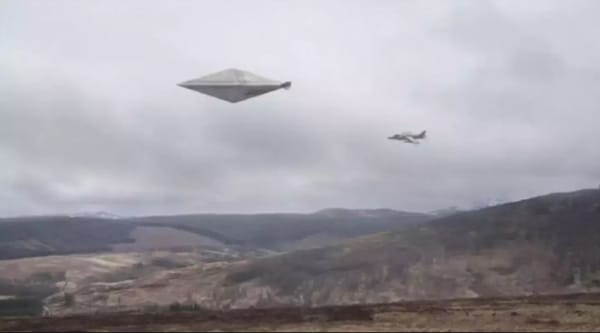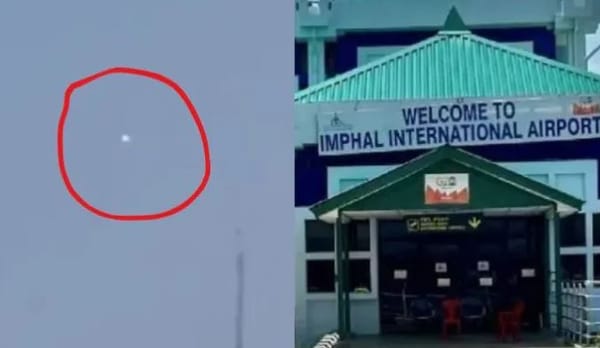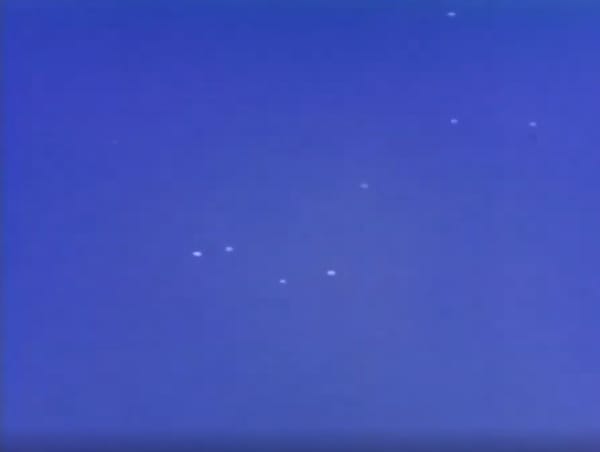The 1942 Battle of Los Angeles

On the night of February 24-25, 1942, Los Angeles was engulfed in a dramatic and confusing episode known as the Battle of Los Angeles. This event, which unfolded just months after the United States had entered World War II following the attack on Pearl Harbor, saw the city’s skies illuminated by anti-aircraft fire and searchlights. The panic and chaos that ensued were driven by fears of an imminent enemy assault. Although the incident lasted only a few hours, it left a lasting impression on the city and has since intrigued historians and the public alike. The Battle of Los Angeles remains a striking example of wartime anxiety and the impact of fear on civilian and military responses.
Historical Context
In the aftermath of the Pearl Harbor attack on December 7, 1941, the United States was swept into a climate of profound fear and uncertainty. The surprise attack by the Japanese had not only inflicted significant damage on the U.S. Pacific Fleet but had also shattered the sense of security that many Americans had previously enjoyed. This sudden and brutal awakening to the reality of global conflict heightened the nation's anxieties about its own vulnerability.
On the West Coast, where the threat of an attack seemed particularly acute, defensive measures were drastically intensified. Cities like Los Angeles, located close to the Pacific Ocean and thus within perceived range of potential enemy attacks, became focal points for heightened security. The government implemented a series of precautionary measures, including strict blackouts aimed at reducing the visibility of urban areas to any potential enemy aircraft. These blackouts were part of a broader strategy to make it more difficult for enemies to locate and target cities from the air.
Additionally, air raid drills became a regular occurrence, preparing both military personnel and civilians for the possibility of a real attack. The city’s defenses were bolstered with increased anti-aircraft artillery, and coastal fortifications were strengthened. These precautions reflected the genuine concern of military and government officials about the potential for direct threats to the American mainland. The heightened vigilance and readiness to respond to any signs of an attack set the stage for the dramatic events of February 1942, when Los Angeles' defenses would be tested in what would become known as the Battle of Los Angeles.
The Event
On the night of February 24-25, 1942, Los Angeles was abruptly jolted into a state of alarm. At approximately 7:18 PM, the city’s air raid sirens blared, signaling what was believed to be a severe threat. This siren was part of a comprehensive warning system designed to alert both the public and military personnel to the possibility of an aerial attack. The initial alarm was triggered by reports of unidentified objects in the sky over the city, which were quickly interpreted as an enemy assault.
As the sirens wailed, chaos ensued. Residents of Los Angeles, already on edge from the ongoing war and heightened security measures, were thrust into confusion and fear. The city’s streets became crowded with people rushing to shelters and military installations. The skies, previously calm, were soon lit up by the flashes of anti-aircraft artillery. Searchlights swept across the heavens, scanning for any sign of enemy aircraft. The air was filled with the cacophony of exploding shells and the roar of artillery fire, as soldiers and air defense units scrambled to respond to what was perceived to be a direct threat.
The military’s response was swift and dramatic. Anti-aircraft artillery batteries, stationed around the city and along the coast, opened fire on what they believed were enemy planes. Flak bursts and tracer rounds punctuated the night sky as the defense forces engaged in a vigorous, though largely ineffectual, barrage. In addition to the artillery, air defense units were mobilized, and searchlights were directed skyward, creating a surreal and disorienting scene. Despite the intense and seemingly coordinated defensive effort, no enemy aircraft were confirmed to have been in the area, and the source of the alarm remained unclear.
Public reaction to the night’s events was a mix of fear, confusion, and widespread misinformation. The initial reports of an enemy attack fueled widespread panic, with residents interpreting the noise and commotion as evidence of an imminent invasion. Rumors spread rapidly, exacerbating the situation; some claimed that enemy aircraft had been sighted over the city, while others suggested that the attack was a cover for a more significant threat. As dawn approached and the city began to recover from the night’s turmoil, it became apparent that the event was not the result of a Japanese air raid, but rather a combination of misidentifications, possibly involving weather balloons or other non-threatening objects. The confusion and fear generated by the incident had lasting effects on the public's psyche, highlighting the tension and uncertainty that pervaded American life during the early years of World War II.
Investigation and Explanation
Following the tumultuous night of February 24-25, 1942, official investigations were launched to determine the cause of the alarm and the accuracy of the response. The results of these inquiries largely concluded that the Battle of Los Angeles was a case of mistaken identity, fueled by a combination of factors rather than an actual enemy attack.
The Army’s official report suggested that the incident was likely a false alarm triggered by a complex interplay of circumstances. Initial reports and eyewitness accounts indicated that the military response was set off by a combination of weather balloons, drifting flares, and possibly the reflections of searchlights on clouds. Additionally, a series of miscommunications and misunderstandings among the military personnel, combined with the high-strung atmosphere of wartime vigilance, contributed to the erroneous belief that an enemy attack was underway. This scenario was exacerbated by the presence of large-scale military exercises occurring in the region around the same time, which may have further confused the situation and contributed to the overreaction.
Despite the official findings, a number of alternative theories and speculations emerged. One of the most intriguing but unfounded theories suggested that the lights and explosions witnessed during the night could have been related to unidentified flying objects, or UFOs. This theory gained some traction in the public imagination, partly due to the unusual nature of the event and the era's burgeoning interest in aerial phenomena. Another theory proposed that the incident might have been a cover for a more sinister form of espionage or sabotage, potentially orchestrated by enemy agents within or near the city. However, these theories were not supported by any concrete evidence and remained speculative at best.
In summary, the official investigations attributed the Battle of Los Angeles to a false alarm, driven by a confluence of factors including wartime anxiety, misidentifications, and a lack of clear communication. While alternative theories like UFO sightings and espionage added layers of intrigue to the story, they did not alter the primary conclusion that the incident was a dramatic example of how fear and misunderstanding can escalate into significant events during times of global conflict.
Impact and Legacy
Immediate Impact
The immediate aftermath of the Battle of Los Angeles was marked by significant changes in both military procedures and public attitudes. In the wake of the false alarm, the military conducted a thorough review of its air defense protocols to prevent a recurrence of such an event. This led to revisions in communication procedures and improvements in the identification of potential threats. The incident highlighted the need for more accurate and reliable intelligence to avoid overreaction and ensure that defense responses were based on verified information rather than mere suspicions.
Publicly, the Battle of Los Angeles had a profound effect on the American psyche. The confusion and fear generated by the event contributed to heightened anxieties about potential enemy attacks. It also led to increased skepticism about the accuracy of official reports and the effectiveness of the defense systems in place. The incident demonstrated the vulnerabilities in wartime security and underscored the importance of clear and precise communication to manage public fear and maintain morale.
Long-Term Legacy
In the long term, the Battle of Los Angeles became a notable episode in the narrative of wartime propaganda and defense strategies. The incident has been remembered and examined through various lenses, reflecting both the paranoia of the era and the challenges of wartime defense.
The Battle of Los Angeles has found a place in popular culture and historical discussion as a symbol of wartime hysteria and the consequences of living under the constant threat of attack. It is often cited as an example of how fear can lead to dramatic and disproportionate responses, serving as a case study in the importance of maintaining rational decision-making under pressure.
Furthermore, the incident influenced the way military and civilian authorities approached air defense and public communication in subsequent conflicts. Lessons learned from the Battle of Los Angeles contributed to more sophisticated and coordinated defense strategies, as well as improved methods for handling public information and managing panic.
In retrospect, the Battle of Los Angeles remains a compelling chapter in the history of World War II. It illustrates the complex interplay between fear, security measures, and public perception, highlighting how a single event can impact both immediate responses and long-term strategies. The legacy of the Battle of Los Angeles endures as a reminder of the profound effects of wartime anxiety and the importance of preparedness and clarity in the face of potential threats.
Conclusion
The Battle of Los Angeles, which unfolded on the night of February 24-25, 1942, stands as a dramatic and illustrative episode in the history of World War II. The event, marked by air raid sirens, anti-aircraft fire, and widespread panic, was initially perceived as an imminent enemy attack on the city. However, subsequent investigations revealed that it was likely a false alarm, caused by a combination of misidentifications, weather conditions, and wartime anxiety.
The immediate impact of the Battle of Los Angeles included revisions in military procedures and a heightened awareness of the need for accurate communication to manage public fear. In the long term, the incident became a symbol of wartime hysteria and influenced future defense strategies and public information practices. It serves as a poignant reminder of the tension and uncertainty that characterized the early years of World War II.
Reflecting on the significance of the Battle of Los Angeles, it becomes clear that this episode underscores the profound effects of fear and misunderstanding during wartime. It highlights the importance of accurate information and rational decision-making in mitigating the impact of such crises. Understanding historical events like the Battle of Los Angeles helps to contextualize the broader narrative of wartime experience and emphasizes the need for clarity and preparedness in managing both military and civilian responses.



